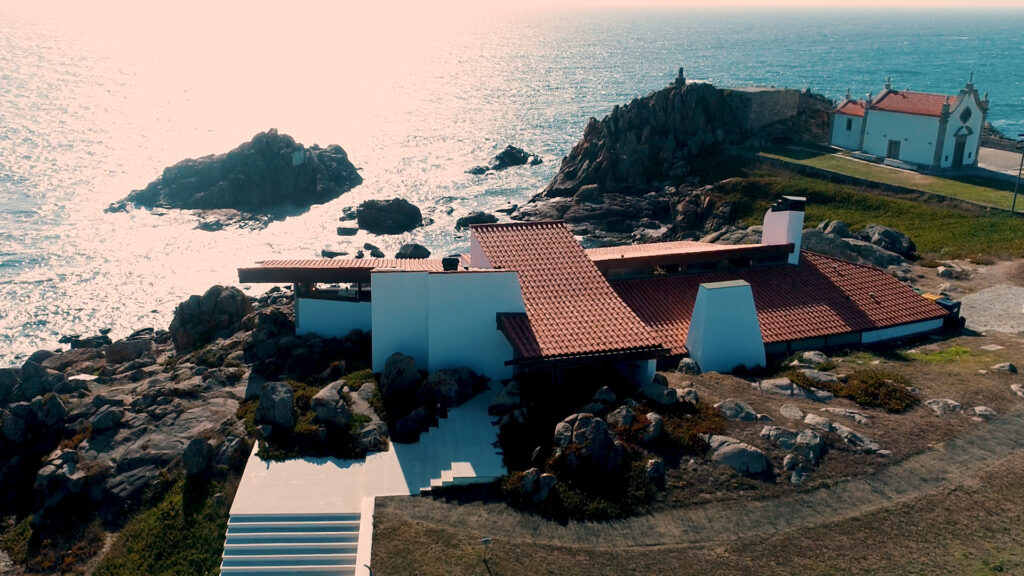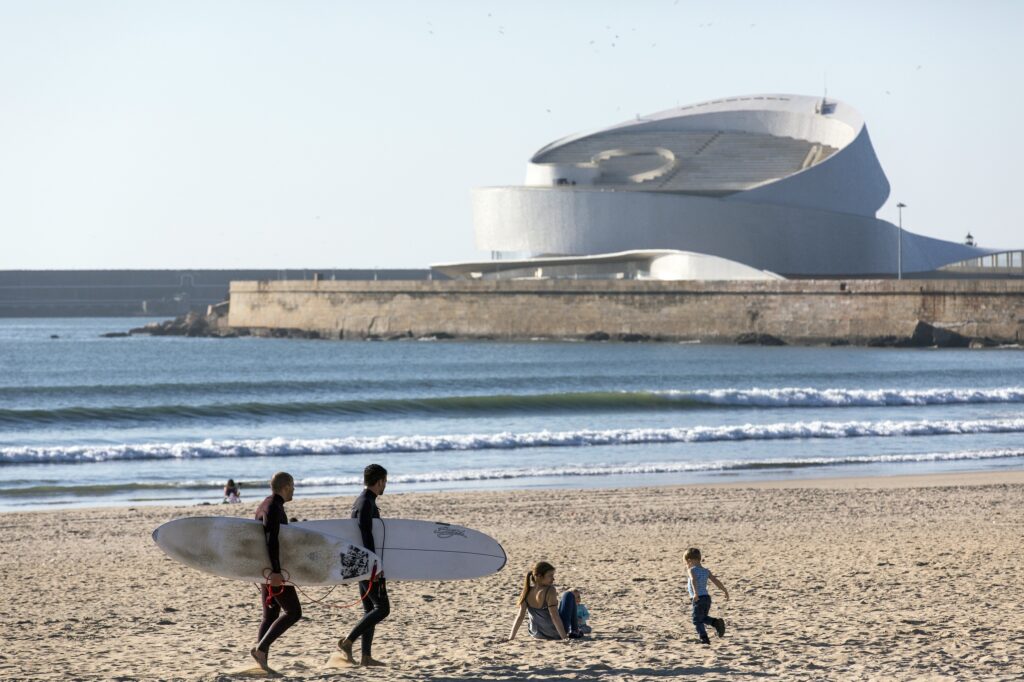╔
A Zona Portuária e o turismo no Porto e Norte de Portugal
A Zona Portuária desempenha, desde sempre, um papel preponderante para o setor do turismo no Porto e Norte de Portugal e, nos últimos anos, o seu contributo tem sido cada vez mais notório.
Mais do que uma porta de entrada e de saída de pessoas, bens e serviços, e com uma importância gigantesca nas exportações nacionais, a Zona Portuária acaba por ser um importante foco dinamizador da região, atraindo todos os dias novos turistas e mercados, promovendo a nossa cultura e património além-fronteiras e estimulando a economia e o desenvolvimento local.
Com mais de 140 quilómetros de Costa Atlântica, o Porto e Norte tem sabido potenciar esta localização privilegiada e esta proximidade com o Oceano, não sendo por isso uma surpresa o facto de possuir várias cidades portuárias que são verdadeiros casos de sucesso nas mais diversas áreas e que ajudam a região a chegar mais longe enquanto destino turístico em Portugal, na Europa e no Mundo, nomeadamente no que diz respeito ao turismo náutico. Matosinhos é um dos bons exemplos, e são muitas as razões que o justificam.
The Port Area has always played a prominent role in the tourism sector in Porto and Northern Portugal, and in recent years, its contribution has become increasingly notable.
More than just a gateway for people, goods, and services, and with immense importance in national exports, the Port Area ends up being an important driving force for the region, attracting new tourists and markets every day, promoting our culture and heritage beyond borders, and stimulating the local economy and development.
With over 140 kilometers of Atlantic coastline, Porto and the North have known to leverage this privileged location and this proximity to the ocean, so it is not surprising that the region has several port cities that are true success stories in various areas and help the region reach further as a tourist destination in Portugal, Europe, and the world, particularly in terms of nautical tourism. Matosinhos is one good example, and there are many reasons for it.

Em Matosinhos é possível saborear o melhor peixe do mundo, fazer surf, passear de barco, entre outras atividades de mar, visitar ícones da arquitetura contemporânea ou usufruir de momentos relaxantes junto ao mar. (© Câmara Municipal de Matosinhos).
In Matosinhos it is possible to taste the best fish in the world, surf, go for a boat ride, among other sea activities, visit icons of contemporary architecture or enjoy relaxing moments by the sea. (© Matosinhos City Hall).
Com a construção do Porto de Leixões nos finais do século XIX, uma infraestrutura que tem sido sucessivamente alargada e melhorada ao longo dos anos, o concelho de Matosinhos tem um papel crucial na indústria e na economia da região. Mas, desde 2011, com a inauguração do Terminal de Cruzeiros, tornou-se também uma nova alavanca para o setor do turismo. Prova disso são os milhares de visitantes que aqui chegam através de navios de cruzeiro e que utilizam o porto como ponto de partida para explorar esta e outras partes da região. Já são cerca de 108 mil passageiros por ano, vindos de todas as partes do mundo, e não tenho dúvida nenhuma de que este número vai aumentar.
É esta porta de entrada a primeira impressão que os turistas que nos visitam – e que optam pela via marítima para cá chegar – têm quando chegam à região, e por isso é tão importante mantê-la, preservá-la e dinamizá-la.
Até porque, além de ser o ponto de chegada de todas estas pessoas, esta área é quase sempre rica em história e património, com muitas estruturas arquitetónicas, monumentos e edifícios históricos que foram preservados ao longo dos anos e que oferecem aos turistas uma oportunidade única para conhecer e explorar a história da nossa região e do país.
A par dessa componente cultural, a zona portuária costuma abrigar também outros pontos de interesse, como museus, salas de espetáculo e galerias de arte. Atrações que são frequentemente visitadas por quem procura experienciar a cultura local e obter uma visão mais aprofundada do que se faz por cá.
Depois, não nos podemos esquecer que é um importante centro de comércio e de serviços para o setor, com estabelecimentos hoteleiros, agências de viagem, empresas de transporte, empresas de animação turística, restaurantes, lojas, entre muitos outros. O que significa que muitos dos turistas que visitam e vivenciam esta área durante a sua estadia não só estimulam a sua economia, como têm também a oportunidade de estar em contacto com a comunidade local, experienciar a excelência dos serviços e conhecer a riqueza dos nossos produtos, como é exemplo em Matosinhos o Best Fish of the World.
Outro ponto forte da zona portuária é a sua localização e proximidade com o mar, um recurso crucial para todas as áreas, sobretudo para o setor do turismo. Como bem sabemos, este sempre foi, é e continuará a ser um dos fortes atrativos do nosso país e, como tal, um produto no qual temos de continuar a apostar em força.
No Porto e Norte de Portugal, a nossa extensa costa atlântica, além de proporcionar fantásticas zonas balneares, oferece condições excelentes para a prática de desportos náuticos, como surf, bodyboard, kitesurf, windsurf e vela. São modalidades que estão a crescer, que têm vindo a ser dinamizadas, também graças ao trabalho que os municípios e o turismo do Porto e Norte têm desenvolvido com as estações náuticas, com elevado potencial para atrair turistas para o território.
With the construction of Porto de Leixões (Leixões Port) in the late 19th century, an infrastructure that has been successively expanded and improved over the years, the municipality of Matosinhos has a crucial role in the industry and economy of the region. Ever since 2011 however, with the inauguration of the Terminal de Cruzeiros (Cruise Terminal), it has also become a new source of leverage for the tourism sector. The thousands of visitors who arrive here through cruise ships and use the port as a starting point to explore this and other parts of the region are the proof of this. There are already about 108,000 passengers per year, coming from all over the world, and I have no doubt that this number will increase.
It is this gateway that is the first impression that tourists who visit us – and opt for the maritime route to come here – have when they arrive in the region, which is why it is so important to maintain, preserve, and promote it.
In addition to being the arrival point for all these people, this area is almost always rich in history and heritage, with many architectural structures, monuments, and historic buildings that have been preserved over the years and offer tourists a unique opportunity to learn about and explore the history of our region and country.
Alongside this cultural aspect, the Port Area also usually houses other points of interest such as museums, theaters, and art galleries; attractions that are frequently visited by those seeking to experience the local culture and gain a deeper understanding of what is done here.
Furthermore, we mustn’t forget that it is an important centre of commerce and services for the sector, with hospitality establishments, travel agencies, transportation companies, tourist entertainment companies, restaurants, shops, among many others. This means that many of the tourists who visit and spend time in this area during their stay not only stimulate its economy, but also have the opportunity to interact with the local community, experience the excellence of the services, and get to know the quality of our products, as exemplified in Matosinhos with Best Fish of the World.
Another strong point of the Port Area is its location and proximity to the sea, a crucial resource for all areas, especially for the tourism sector. As we well know, it has always been, is, and will continue to be one of the strong attractions of our country and, as such, a product in which we must continue to invest heavily on.
In Porto and Northern Portugal, our extensive Atlantic coast aside from offering fantastic beach areas also provides excellent conditions for practicing water sports such as surfing, bodyboarding, kitesurfing, windsurfing, and sailing. They are sports that are growing and have been stimulated thanks to the work carried out by the municipalities and tourism authorities in Porto and the North as well, with a high potential to attract tourists to the region.

Matosinhos oferece condições excelentes para a prática de desportos náuticos durante todo o ano. (© visitporto).
Matosinhos offers excellent conditions for water sports all year round. (© visitporto).
Por fim, a zona portuária permite também uma maior aposta e investimento na ciência e investigação. Mais uma vez, o Terminal de Cruzeiros do Porto de Leixões é um modelo a seguir nesta temática, uma vez que alberga unidades de investigação relevantes na área das Ciências Marinhas. Além de ser sede do CIIMAR – Centro Interdisciplinar de Investigação Marinha da Universidade do Porto, esta infraestrutura acolhe ainda outras unidades de investigação da Universidade do Porto com projetos ligados ao mar, focadas em áreas que vão desde a Biologia à Robótica, e serve de polo de incubação para novas empresas.
Em suma, são inúmeras as potencialidades de uma zona portuária, e nas mais variadas áreas, o que a torna um importante instrumento estratégico de desenvolvimento da região, contribuindo para a sua economia, gerando riqueza, proporcionando novas atividades produtivas e criando postos de trabalho.
No setor do turismo, assume cada vez mais um papel fulcral na relação não só entre o porto e a cidade, bem como entre o porto e toda a região, na medida em que oferece novas oportunidades para fixar pessoas, criar negócio, atrair turistas e dar a conhecer e promover elementos tão importantes como a nossa cultura, património, gastronomia e a identidade.
Finally, the Port Area also allows for a greater investment in science and research. Once again, the Terminal de Cruzeiros do Porto de Leixões (Cruise Terminal of Leixões Port) is a model to follow in this aspect, as it houses relevant research units in the field of Marine Sciences. Aside to being the headquarters of CIIMAR – the Interdisciplinary Centre for Marine Research of the University of Porto, this infrastructure also accommodates other research units of the Universidade do Porto (University of Porto) with projects related to the sea, focused on areas ranging from Biology to Robotics, and serves as an incubation hub for new companies.
In summary, there is an unmeasurable potential for a Port Area, in a wide variety of regions, which makes it an important strategic instrument for the region’s development, contributing to its economy, generating wealth, providing new productive activities, and creating jobs.
In the tourism sector, it increasingly plays a pivotal role in the relationship not only between the port and the city itself but also between the port and the entire region, as it offers new opportunities to settle people, create businesses, attract tourists, and showcase and promote very important elements such as our culture, heritage, gastronomy, and identity.
IMAGEM INICIAL | Em 2022 foram mais de 100.000 os passageiros vindos de todas as partes do mundo que entraram na região através do Terminal de Cruzeiros do Porto de Leixões. (© João Ferrand).
HEAD IMAGE | In 2022 more than 100,000 passengers from all over the world entered the region through the Cruise Terminal at Leixões’s Port. (© João Ferrand).